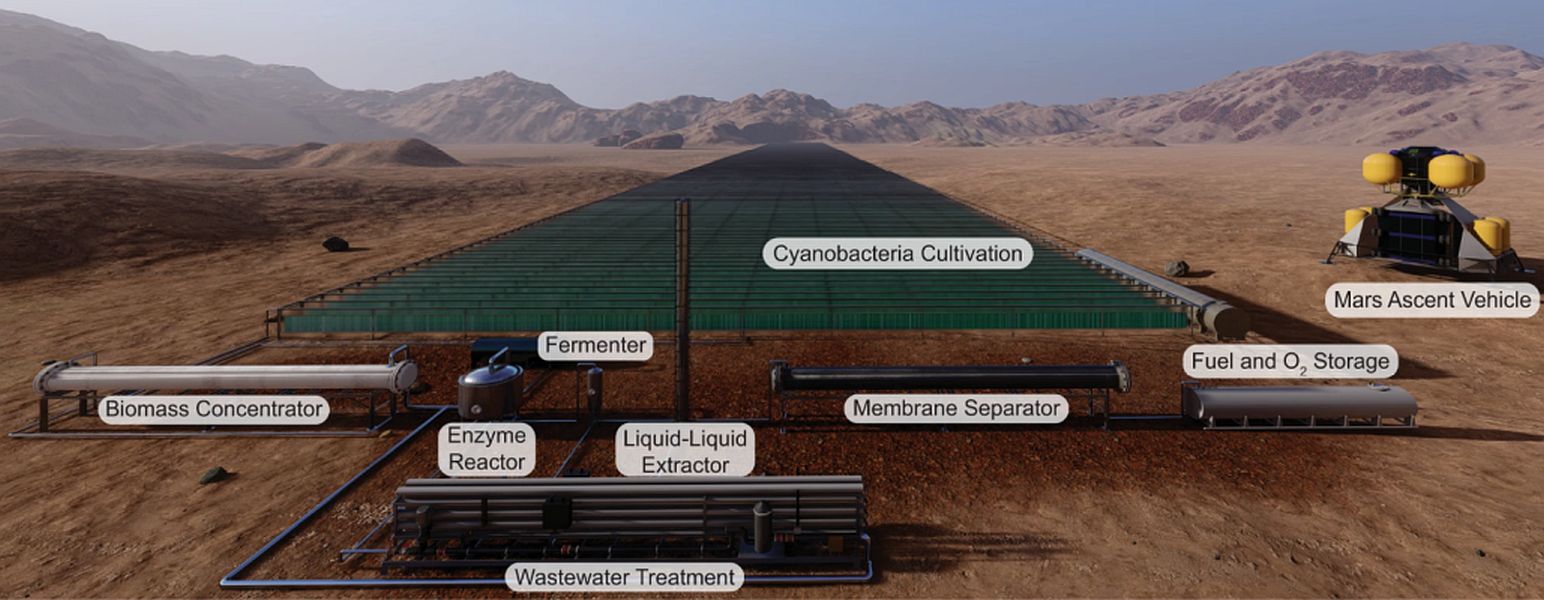
What if we are able to produce fuel directly on Mars? Explorers would then be able to stay on the red planet a li’l longer and return journey will then be easier relatively.
Shipping the propellant and oxygen for a return journey from Mars would cost billions of dollars. To make things easier, researchers have developed a concept for local rocket fuel production with algae and E.coli.
At present, rocket fuel comprises of LOX (liquified oxygen) and methane. NASA’s Curiosity rover has detected the presence of methane, however, the Trace Gas Orbiter, part of ESA’s ExoMars mission has yet to sense methane definitively. Therefore, the unavailability of these resources has propelled the scientists to develop a concept that would assist them for production of biofuel. Additionally, it would also help them in reducing the ever-increasing costs per mission.
Raw materials on Mars
Raw materials required for the production of Mars-specific rocket propellant are 2,3-butanediol (2,3-BDO), from CO2, sunlight and water. And Mars is already saturated with these resources.
Colonists would still be required to carry microorganisms to kick start the initial phase of fuel production. In addition to it, they would also need some plastic components to construct reactors.

Researchers have proposed bio-engineered E.coli bacteria, the blue-green algae aka cyanobacteria for the fuel.
Dr. Nick Kruyer, the lead author said that microorganisms are good at morphing CO2 into helpful components. Mars is already saturated with CO2 hence, the blue-green algae would be a good fit for the production of rocket fuel on location.
Biofuel on Mars
Blue-green algae with the help of sunlight will transform CO2 into sugars. These will get further morphed by bio-engineered E.coli into 2,3-butanediol.
2,3-Butanediol is an organic compound that is used to produce rubber components. This time, however, scientists is giving it a new role – fuel.
To cultivate phototrophic microorganisms, colonists will first assemble photobioreactors. The plastic components of photobioreactors will be transported from Earth. Algae will be raised in these photobioreactors via photosynthesis, in the presence of localised CO2.
In other section of the photobioreactors, algae would be broken down into sugars under the influence of enzymes. E.coli bacteria are fed with these sugars to produce the rocket fuel. Of course, after separating the bacteria with the aid of high-tech separation techniques.
Interestingly, in the entire process, the end product will be sufficient amount of clean and breathable oxygen that could be used within the colony by the explorers to support colonization.

Takeaway
Overall, the concept looks promising and if it becomes successful then colonising the red planet would not remain a far-fetched dream. Matthew Realff, part of the research team added that since the spectrum of sunlight is different than what is experienced on Earth, necessary experiments need to be conducted to prove the efficacy of cyanobacteria in Martian atmosphere.
Once the challenges are crossed, interplanetary space travel would become a viable option, after all, planet Mars with have its own rocket propellant production facilities.
Via: Nature.com



